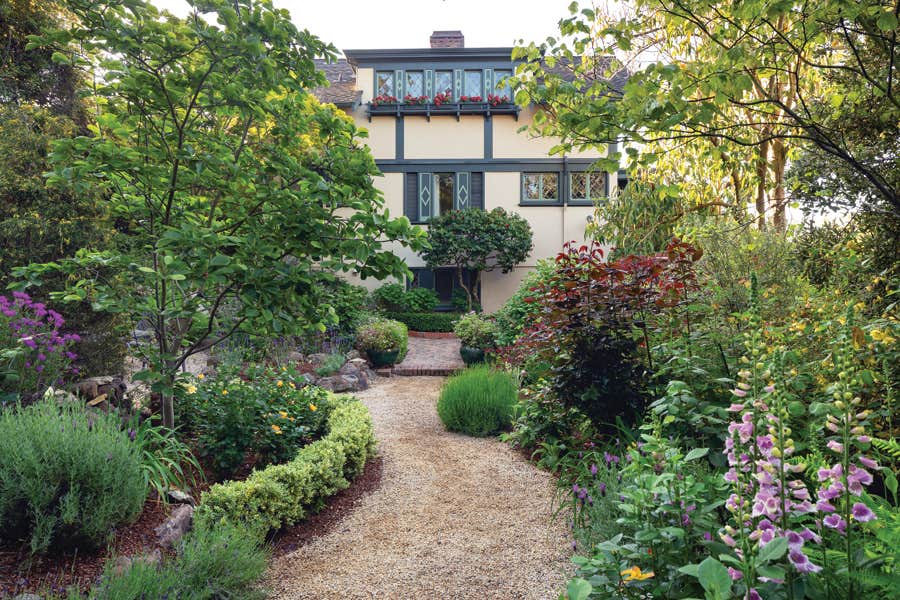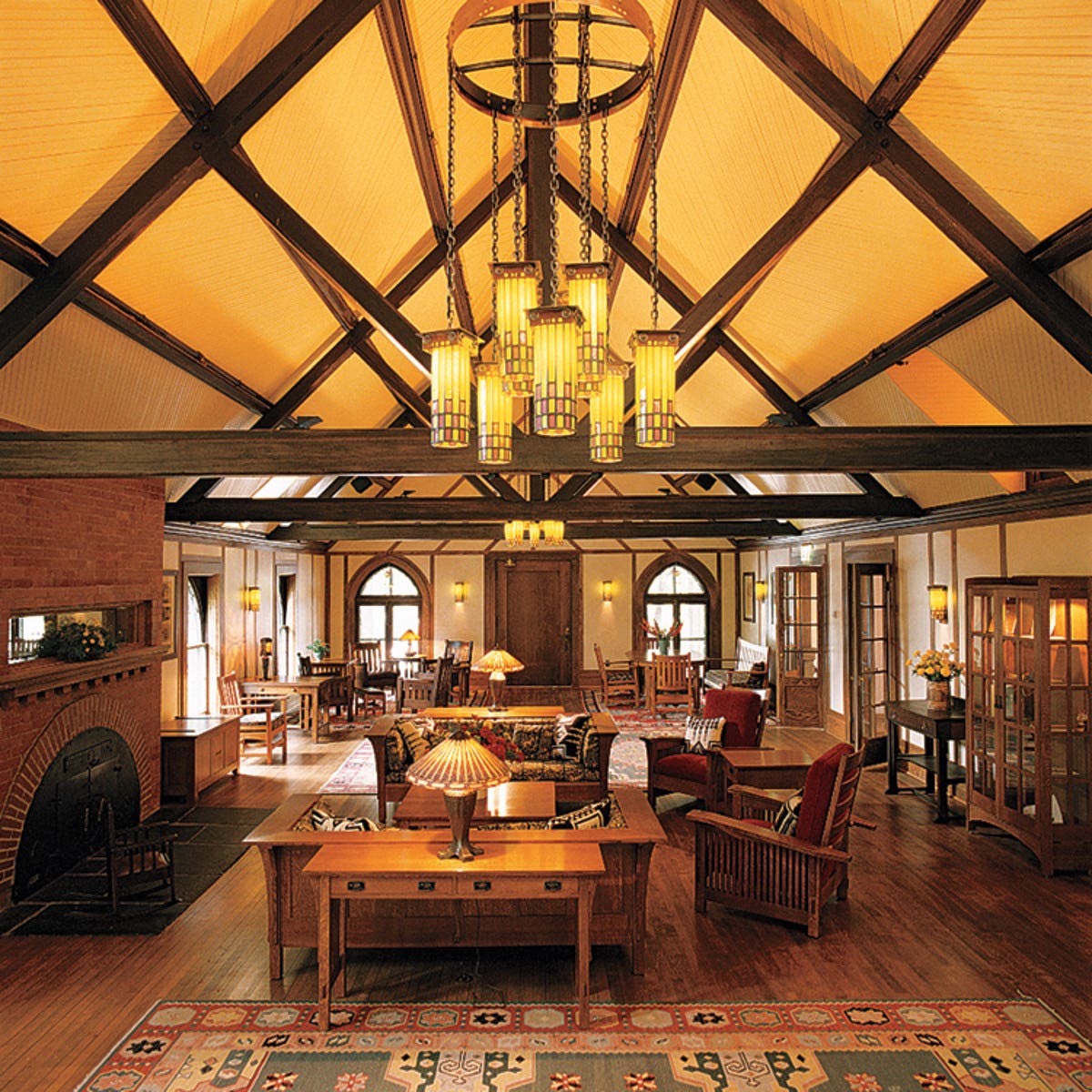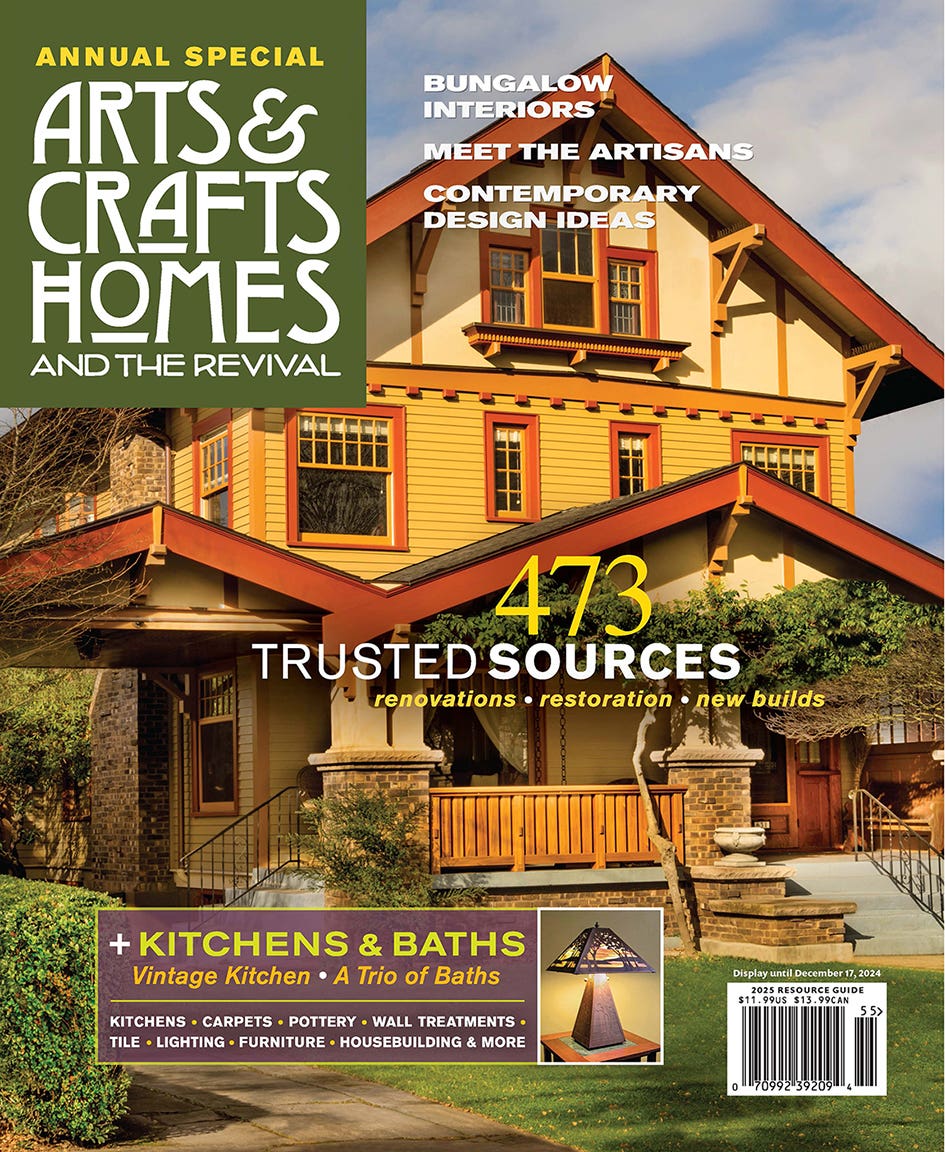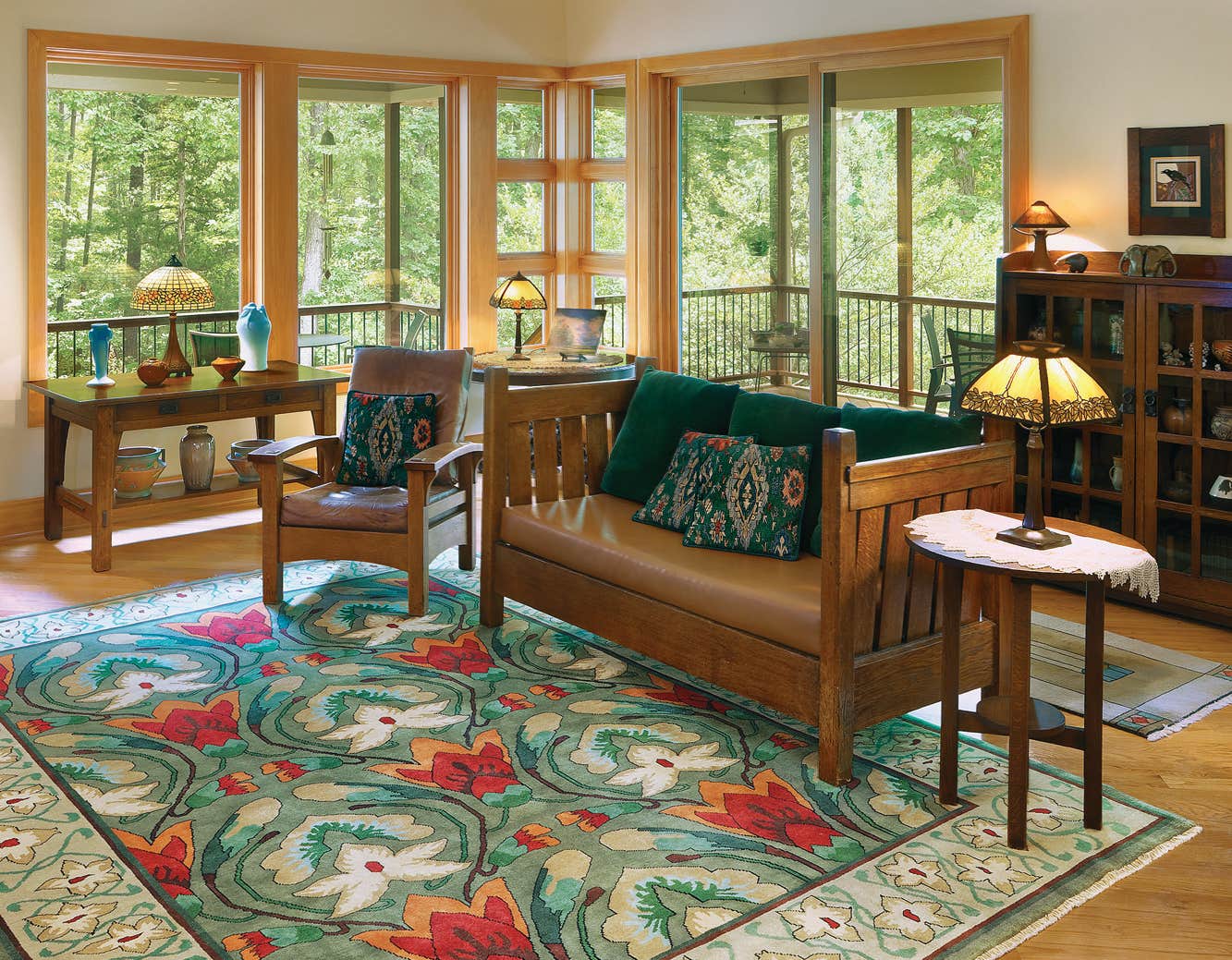The House of a Preacher Unretouched
Mount Hood is the name of the house owned by the evangelist Billy Sunday and his wife, Helen. They built it in 1911 in Winona Lake, Indiana.
The town of Winona, Indiana, got its start in 1881, when the Beyer brothers bought land around Eagle Lake (later Winona Lake) and its natural springs. They created a resort called Spring Fountain Park in 1887, which was also a Chautauqua site, later to be a Presbyterian Assembly. (The summer-camp movement that started in Chautauqua, New York, involved family retreats stressing health in exercise, entertainment, and matters of the spirit.) The Assembly’s board of directors would include H.J. Heinz, John Studebaker, and William Jennings Bryan.
Many cottages and year-round homes were built, and education flourished with the founding of the Agricultural Institute, the Technical Institute, and Winona College. Summer attendance in Winona reached 250,000 at its peak during the period 1905–14.
Since the 1920s, through economic ups and downs, the town earned renown as a Christian center. Grace College and Theological Seminary are here, along with headquarters of other church organizations; Winona Lake was called “the world’s largest Bible conference.”
Back in 1899, the evangelist Billy Sunday and his family visited Winona Lake, renting rooms in a boardinghouse. They enjoyed the new resort enough to buy their own summer cottage here. A decade later they moved the old cottage across the street and built an Arts & Crafts Bungalow on its original site. Mount Hood, as they named it, became their year-round home. Sunday and his wife, Helen, raised four children. Helen outlived everyone in her family, and in 1957 asked that the house remain untouched as a testament of her husband’s ministry. It survives today as a time capsule of Arts & Crafts decorating and early 20th-century life.
Outside, the house is an atypical bungalow with a shaped-concrete-block foundation and porch walls. The gable faces the lake. The interior is remarkably intact, featuring painted burlap wall coverings and stenciling on plaster. Even the furniture is original. Artifacts in the house allude to Billy Sunday’s earlier career in professional baseball and to his days as a Prohibition evangelist; Ma Sunday’s needlework survives. The family’s china remains in the kitchen, their books in the inglenook; various loving cups and tea sets, gifts from cities where the preacher spoke, furnish rooms.
- Remarkably intact, the house’s interior is typical of a Midwest bungalow
ca. 1915. Beams cross the plaster-on-lath ceilings, and woodwork is naturally finished. Sophisticated stencil designs remain in public rooms. Art glass table lamps survive, as do multi-light shower or pendant ceiling fixtures.
Today Mount Hood is part of the museum holdings of the Winona History Center, headquartered on the campus of Grace College in Winona Lake. (Grace College purchased the Assembly grounds in 1968.) The town itself is having another renewal, this time featuring ongoing restoration activity, various cultural festivals, boutiques, and world-class restaurants. A typical house of the early 20th century built with concrete blocks.
Concrete block in the vernacular
Winona Lake has a lot of concrete-block structures, extending even to mansions. The Beyer Mansion, built in 1907 and variously described as Queen Anne, Romanesque, and Italian Renaissance, was the “duplex” home of town founders J.E. and J.F. Beyer. Each brother had one half of the sprawling, symmetrical house with twin corner towers. The exterior has ten or more different types of decorative block manufactured by the Winona Building Materials Manufacturing Company. (Located across Kings Highway and northwest of today’s historic district, the firm clearly influenced the local taste in materials.)
Other late Victorian and early 20th-century houses in town, from Queen Annes to American Foursquares, have block foundations or lower storeys. Ornamental concrete block was a popular material in the first quarter of the 20th century, particularly in the upper Midwest. Chicago-based Sears, Roebuck offered kit houses made with block as well as do-it-yourself kits for making blocks. a “There is a surprising lack of local curiosity or knowledge about this material,” reports Kelley Barnhart, a local who is also the business manager at Classic Rock Face Block in Fort Wayne. The Indiana company supplies blocks of different colors and characteristics for restoration and new construction.
Our thanks to Terry D. White; please refer to the history book Winona at 100: Third Wave Rising by Terry White with Steve Grill (BMH Books, 2013).
Patricia Poore is Editor-in-chief of Old House Journal and Arts & Crafts Homes, as well as editorial director at Active Interest Media’s Home Group, overseeing New Old House, Traditional Building, and special-interest publications.
Poore joined Old House Journal when it was a Brooklyn-brownstoner newsletter in the late 1970s. She became owner and publisher and, except for the years 2002–2013, has been its editor. Poore founded the magazines Old-House Interiors (1995–2013) and Early Homes (2004–2017); their content is now available online and folded into Old-House Journal’s wider coverage. Poore also created GARBAGE magazine (1989–1994), the first unaffiliated environmental consumer magazine.
Poore has participated, hands-on, in several restorations, including her own homes: a 1911 brownstone in Park Slope, Brooklyn, and a 1904 Tudor–Shingle Style house in Gloucester, Massachusetts, where she brought up her boys and their wonderful dogs.








